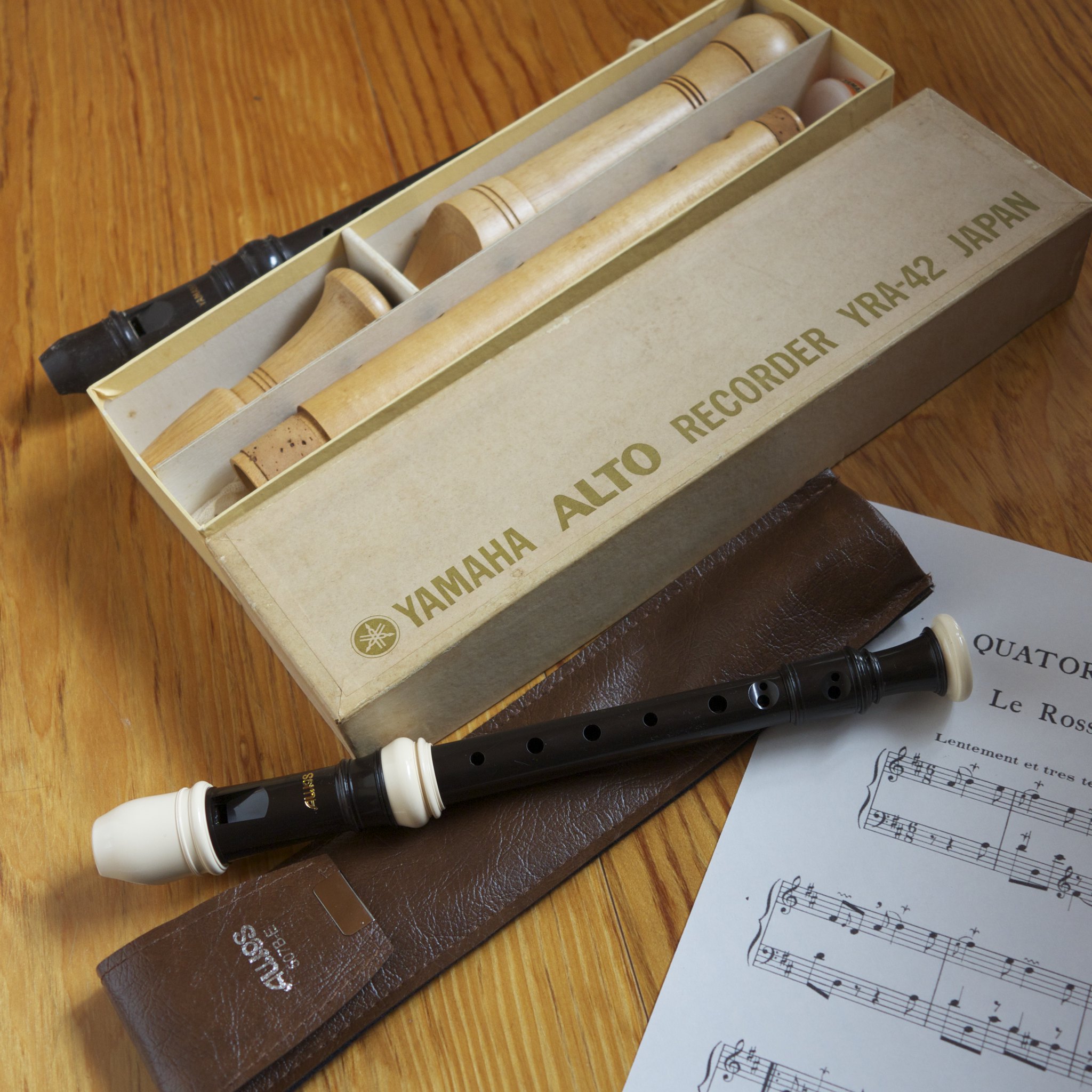What in the heck is the hyperbass flute? Well... let me tell you what we know about the lowest member of the flute family.
Background
Every time you think you've heard of the lowest member of the flute family, a new "low" is achieved. Bass Flute, Contrabass Flute, and Double Contrabass Flute, seem by some to be excessive, but a subcategory of low flute specialists want the instrument to go even lower. With each new invention, the flute family expands and achieves a different level of timbral possibilities.
The examination of the hyperbass flute starts with Roberto Fabbriciani. Fabbriciani is a flutist and composer from Italy, and he has made a name for himself by exploring the various tone color possibilities of the flute family. He worked with an Italian Craftsman by the name of Francesco Romei to build his hyperbass flute, an instrument he has used in several recordings. This instrument was constructed around the turn of the century.
There was one challenge with Fabbriciani's Hyperbass Flute, there were no "keys", just large tone holes that had to be covered with the palm of the hand. Therefore, it is mostly limited to drones and explorations in tone color, much less pitch.
Now Fabbriciani is not a self-proclaimed "low flute specialist." In fact, his website does not even list the hyperbass flute in his bio. This tells me that the instrument is just another tool in his arsenal of ways to explore music and composition.
Now, enter Peter Sheridan, who does specialize in low flutes, having had multiple compositions composed for the low instruments in the family from the Bass flute down. Sheridan, a New York native now living and teaching in Australia, commissioned the first fully chromatic hyperbass flute from Jelle Hogenhuis, of Hogenhuis Flutes, in 2010. Hogenhuis is an independent low-flute maker and inventor, having experimented in the design of many low flutes, including an open hole bass flute and a quarter-tone contrabass flute.
Hogenhuis built the first, and at this time, only known fully chromatic hyperbass flute.
Construction
The Fabbriciani Model
Fabbriciani's hyperbass flute, as previously mentioned, has no keys, and therefore is played with the palm of the hand covering the tone holes as needed. This instrument was made entirely out of PVC Pipe and Wood. This instrument is over 15 meters (49 feet) in length. I have no idea how you tune it. (It's funny because its true.)
The Hogenhuis Model
The Hogenhuis model is shorter, in that it is only 10 meters in length, but as such has a larger tubing diameter to achieve the desired range. Hogenhuis created an entirely chromatic instrument, spacing out the tone holes to mimic any other flute. As such, every tone hole is opened and closed by pressing a key, with hands positioned more like you would see on a contrabassoon than a flute.
Tone and Technique
The hyperbass has a range that is four octaves lower than the standard flute. FOUR OCTAVES. The lowest note on the instrument is C0, which has a frequency of 16 hertz. For reference, the standard range of human hearing is 20 to 20,000 hertz.

The tone of the hyperbass flute, at the moment, is very growly. The breath and air stream of the performer is heard almost as prominently as the pitch being played by the instrument itself.
As it required a large amount of air to get the sound to be produced, you will not be hearing many large musical phrases played out of this instrument. Fabbriciani's flute is used mostly for long held tones, and explores the various tone colors possible at such low frequencies.
Hogenhuis's model, being fully chromatic, is capable of more fluidity, but just purely on the nature and size of the instrument, there is not a lot of technical facility, at least for now, that we will be hearing from this flute.
Here is a video showcasing the making of the Hogenhuis model through various images. The video is accompanied by music played on the hyperbass flute.
Music for the Hyperbass Flute
At this point, and with good reason, the only way to experience the hyperbass flute is to hear either Roberto Fabbriciani or Peter Sheridan in concert. Fortunately for us, both have recorded various pieces with their instrument.
The first piece ever written for the instrument is Persistenza della memoria (loosly translated, Persistent Memory) composed by Allesandro Grego. This was written for hyperbass flute, live electronics and magnetic tape, and can be found on Fabbriciani's album Flute XX Vol. 2 (deems to be several pre-owned copies out in the world for purchase if you are curious). The composer has made it available to listen to via YouTube.
If you go through the entire discography of Roberto Fabbriciani, you can hear this flute on many pieces. Many of the works are for hyperbass flute and electronics or tape, though I am very intrigued by an entire album produced for hyperbass flute and microtonal tuba. Fabbriciani has even experimented with motion capture technology to control the electronic accompaniment while he plays the hyperbass flute.
Peter Sheridan used his hyperbass flute on the album Monologues & Dialogues which is streaming on Amazon music. "Differing Dialogues" is for bass flute accompanied by a track of prerecorded low flutes, including the hyperbass, and "Groaning Oceans" by Sheridan and Clements features the hyperbass flute with electronics.
Conclusion
This instrument is quite an innovation. I do not know if it will reach wide popularity, though I imagine these two versions of the instrument won't be the only ones ever made. Over time, more and more will be fabricated and more compositions will be written for this massive member of the flute family.
It is wonderful to see that even an instrument family that has been around for centuries can see such innovation and change in modern times.




